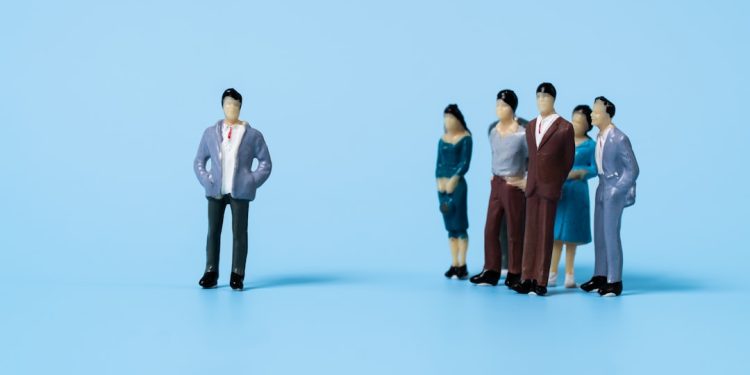No products in the cart.
Can AI Transform Workplace Diversity for the Better?
As AI becomes integral in workplaces, it presents both opportunities and challenges for diversity and inclusion efforts. Can it truly eliminate bias?
In a world increasingly driven by algorithms and data, the conversation surrounding artificial intelligence (AI) often pivots towards its potential for social good—or its perilous pitfalls. When it comes to workplace diversity, AI has emerged as both a beacon of hope and a source of concern. Can this technology serve as a bias fixer, or does it risk amplifying the very inequalities it aims to address?
The promise of AI in fostering diversity and inclusion (D&I) is compelling. Automated tools can sift through vast pools of applicants, identify qualified candidates faster, and even support hiring managers in making more objective decisions. For many companies, this is a seductive prospect. After all, a diverse workforce is not just a moral imperative; it’s a business one. Research shows that diverse teams are more innovative and drive better performance.

However, the reality is more nuanced. AI systems are only as unbiased as the data they are trained on. If historical hiring data reflects existing biases—whether due to race, gender, or socioeconomic status—then AI tools can inadvertently perpetuate these disparities. In fact, some studies have shown that AI systems can be less effective at recognizing the qualifications of candidates from underrepresented groups, leading to a paradox where the very tools designed to enhance diversity could end up entrenching the status quo.
The Double-Edged Sword of AI
Consider the experience of a young woman named Maria, a computer science graduate from a prestigious university. Eager to break into tech, she applied to hundreds of positions, often facing rejection without feedback. After many attempts, she learned that companies were using AI-driven applicant tracking systems that favored candidates with certain keywords—often aligned with traditional male-dominated profiles. Maria’s story is not unique; it underscores the need for a more thoughtful approach to integrating AI into hiring practices.
 AI
AIAI Revolution: 100,000 Tech Jobs Disappear in 2025
As AI reshapes the workforce, over 100,000 tech jobs have vanished in 2025. This article explores the implications for workers…
Read More →On the flip side, there are companies that have successfully leveraged AI to combat bias.
On the flip side, there are companies that have successfully leveraged AI to combat bias. They have implemented systems that not only analyze resumes but also assess soft skills through AI-driven interviews, providing a more holistic view of candidates. For instance, Unilever has utilized AI to anonymize applications, stripping them of names and other identifiers that could reveal a candidate’s gender or ethnicity. This approach has led to a significant increase in the diversity of their hiring pool, emphasizing the importance of intentionality in AI implementation.
The Rise of DEI-Tech Careers
As organizations strive to enhance their diversity efforts with AI, a new wave of career opportunities is emerging: DEI-tech roles. Professionals in this niche will bridge the gap between technology and human resources, ensuring that AI tools are designed and implemented with equity in mind. These roles will require a blend of technical acumen and a deep understanding of social justice principles—think data scientists who specialize in ethical AI or HR professionals trained in data analytics.
Moreover, the demand for DEI-tech professionals is being fueled by a broader societal shift. Gen Z and Millennials are not just looking for jobs; they want to work for companies that align with their values. A recent survey found that 76% of young professionals prioritize diversity and inclusion when choosing an employer. Companies that fail to address these concerns may find themselves struggling to attract top talent.
Challenges and Opportunities Ahead
Yet, the path forward is fraught with challenges. As AI technology evolves, so too must our understanding of its implications. Companies must remain vigilant against the risks of over-reliance on algorithms. Human oversight is essential. It is crucial to continually assess AI systems for biases, adjusting and retraining models as necessary. This iterative process will help ensure that AI serves as a tool for empowerment rather than exclusion.
 Branding
BrandingAI’s Net Job Impact in 2025: Growth, Displacement, and the Youth Workforce
Global agencies forecast AI-driven job growth in 2025, but automation threatens roles critical to young workers. This analysis breaks down…
Read More →In addition, companies need to invest in training for their teams. Employees should not only understand how to leverage AI in their hiring processes but also how to recognize and mitigate potential biases. This could involve workshops, mentorship programs, and collaboration with external DEI experts.
Ultimately, the success of AI in promoting workplace diversity hinges on the commitment of organizations to use technology responsibly. It requires a cultural shift—one where diversity is seen not as a checkbox but as a core value integrated into the very fabric of the organization.
Moreover, the demand for DEI-tech professionals is being fueled by a broader societal shift.
Looking Ahead
As we stand at the crossroads of technology and human interaction, the future of workplace diversity through AI remains uncertain yet promising. The potential of algorithms to foster inclusivity is matched only by the responsibility they bring. For every story like Maria’s, there are countless others where AI has opened doors. The challenge lies in ensuring that these doors remain open for all—regardless of background or identity.
As we navigate this landscape, it’s essential for professionals, employers, and policymakers to engage in ongoing dialogues about the ethical implications of AI in the workplace. Only then can we harness its power to create a more equitable future for everyone.
 Start-ups
Start-upsIndia’s Pharmaceutical Industry: A Global Leader in Innovation and Manufacturing
India's pharmaceutical industry is rapidly transforming into a global powerhouse, driving innovation and manufacturing.
Read More →










